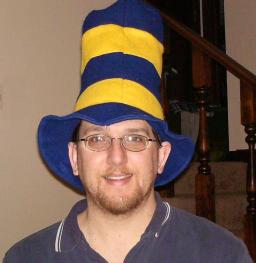no greater love: marcus and narcissa whitman
Narcissa Prentiss was born in 1808, the third of nine children of Stephen and Clarissa Prentiss of Prattsburg, New York. At the age of 16, she was inspired to become a missionary after reading a biography of Harriet Boardman, a missionary to India. She trained at the Franklin Academy in Prattsburg and then at a women's teaching school in Troy, NY, and became a kindergarten teacher. In 1834 she heard Reverend Samuel Parker speak of the need for missionaries in the Oregon territory. Narcissa volunteered to go, and Rev. Parker agreed to contact the American Board of Commissioners for Foreign Missions (ABCFM) on her behalf.
Marcus Whitman was born in 1802 to Beza and Alice Whitman of Rushville, New York. When he was seven, his father died, and young Marcus was sent to Massachusetts to live with his uncle. As a teenager, he had a conversion experience some time during a series of revivals. He felt called to be a minister, but his family could not afford to send him to seminary. Instead, he apprenticed with the town physician in Rushville, and became a medical doctor. He began practicing medicine in 1825, but he still believed his calling was to be a minister. He enrolled in seminary, but became ill and was forced to abandon his studies.
In 1831 he enrolled in the College of Physicians and Surgeons in Fairfield, NY, to get an M.D. degree. After getting his degree, he moved to Wheeler, NY, where he became active in the Wheeler Presbyterian Church. In 1834 he applied to the ABCFM to become a medical missionary, but was told that the board only accepted married couples.
Marcus and Narcissa were introduced to each other in early 1835, and were soon engaged. They were married on February 18, 1836, and left for Oregon Country in the spring of that year with a group of ABCFM missionaries.
They established a mission at Waiilatpu, near what is now the Washington-Oregon border, where they ministered to the Cayuse.
Like many 19th century missionaries, the Whitmans failed to understand the culture gap, and tried to turn the nomadic Cayuse into farmers. This led to a tense relationship from the start.
The mission soon became a stopping point for white settlers traveling on the Oregon Trail. This only increased the tension, especially because the settlers brought with them diseases to which the natives had no immunity.
Still, the Whitmans tried to be faithful to their calling to minister to the Cayuse. Marcus practiced medicine and preached; Narcissa established a school and an orphanage. The Cayuse remained wary.
A measles outbreak in the fall of 1847 brought the pent-up resentment into the open. The Cayuse could see that Cayuse children were dying in much greater numbers than white children. In Cayuse culture, a medicine man who is unable to cure diseases can be held responsible for the deaths. A half-white, half-native settler named Joe Lewis stirred up the resentment of the Cayuse by suggesting that Dr. Whitman was deliberately poisoning Cayuse children.
On November 29, 1847, a band of Cayuse warriors accompanied by Joe Lewis attacked the mission. Marcus heard a knock at the kitchen door, and was stabbed repeatedly with tomahawks when he answered it. Narcissa was shot in the shoulder as she looked out the window. Lewis entered the building and helped Narcissa onto a couch, then helped carry the couch out the door. Once outside, Lewis dropped his end of the couch and stepped away. This was a signal to the Cayuse to begin firing at her. They continued shooting until they were sure she was dead. Marcus eventually lost consciousness in the kitchen, and died.
By the time the attack was over, the Cayuse had killed eleven others who were associated with the mission. A handful of mission residents escaped, but 53 women and children were held hostage for a month. After their release the mission was abandoned, and was subsequently burned by the Cayuse.
Labels: martyrs






1 Comments:
There are so many stories like that.
Post a Comment
Links to this post:
Create a Link
<< Home